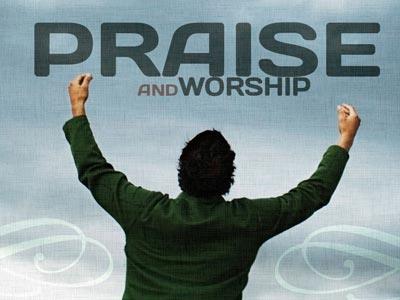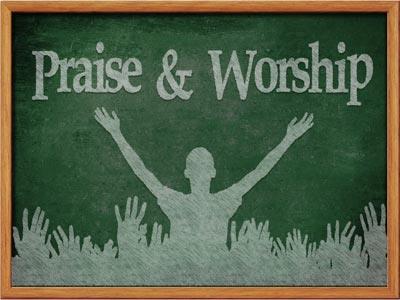-
Worship - Jesus Style Series
Contributed by Ernie Arnold on Aug 6, 2016 (message contributor)
Summary: In this passage Jesus teaches us about TRUE WORSHIP. Jesus tells us in verses 10 - 13 that True Worship is 1. INVITING and INCLUSIVE 2. It makes an IMPACT 3. Results in INEXTINGUISHABLE PRAISE
Scripture: Luke 13:10-17 (cf. verses 10 - 13)
Theme: Worship - Jesus Style
Proposition: In this passage Jesus teaches us about TRUE WORSHIP - 1. True Worship is Inviting 2. True Worship Impacts Lives 3. True worship results in Inextinguishable Praise.
INTRO:
Grace and peace from God our Father and from His Son Jesus Christ who came to take away the sin of the world!
Growing up in the Church of the Nazarene in Eastern Kentucky our pastors did their best to help us experience true worship. Our worship services were designed to be more than a gathering of like minds and souls. Our worship services were designed to be more than singing a few songs, having a time of prayer, listening to a sermon and ending the service with an altar call. They were designed to be times that we would follow the advice of David in Psalms 96:9 - "O worship the LORD in the beauty of holiness...".
Worship was to be so much more than choir specials, testimonies shared or even people praying around the altar. Worship was to be more than returning God's tithes and our offerings during the offertory. Worship was to be more than volunteering for children's church, working with the teens or even teaching a small group. All of these could be labeled as expressions of worship but we were taught that they do not define true worship.
True worship is when we worship the LORD our GOD with all our heart, mind, soul and strength and when we love our neighbor as ourselves. True worship is when the veil between heaven and earth is experienced at its thinnest. Our passage this morning shares with us three amazing elements that share with us the definition of true worship. Jesus shares with us an illustration of what he desires worship to look like, smell like and feel like. Let's take a few moments and see what Jesus teaches us about true worship in this passage:
I. TRUE WORSHIP IS INVITING - verse 10 - 11
One of the amazing things we read about in this passage is how open and inviting the doors were to this local synagogue. Luke doesn't share its precise location but as we read verses 10 -11 we quickly notice that it possessed a wide open door policy.
+It was open to those of the local Jewish community. Anyone living near this synagogue was both encouraged and welcomed to come to worship and learn.
+It was open to Jesus and his disciples. It is important for us to remember that Jesus' ministry was inside, not outside the worship and common life of Israel. To be in the synagogue on a Sabbath day was to be at the heart of Judaism and at the heart of Jesus Christ. Luke reminds us that it was Jesus' custom to either be at the Temple or at the synagogue on the Sabbath.
H. D. M. Spence shares with us that in the early months of Jesus' ministry, he was a frequent teacher in the synagogues that dotted the landscape along his missionary tours. Wherever Jesus was it was common for the local synagogue rulers to graciously open their doors to him and his disciples. As time went on it appears that was not always the case. Under growing pressure from the Jewish religious hierarchy along with the growing enmity of the Pharisees it appears that Jesus was beginning to be excluded from some synagogues. Dr. Spence uses the term "lesser excommunication" to describe the advancing situation. However, that was not the case with this particular synagogue - it still had a Welcome Jesus Sign.
+It was open to Jewish women. Rabbi Joshua, Senior Rabbi of Ahavat Zion Synagogue in Santa Monica, CA tells us that during the Second Temple period, women were able to serve as leaders of synagogues, participate in ritual services, learn and teach Jewish law. Women could even be members of the quorum of ten needed to say the "Eighteen Benedictions" and like the men were able to say "AMEN" in response to the priestly blessings.1
+It was open to broken people. In verse 11 we read where a certain woman suffering from a curvature of the spine was allowed to attend the synagogue services. She would not have been allowed in the inner parts of the Temple due to her condition but in the outlying synagogues the rules were more relaxed.
All of this causes us to take some time and examine our own situation and circumstances. How open are our small groups and worship settings? How inviting are our doors? Are they saturated with grace and grace? Are they inviting or are they closed off?
It can be as simple as our body language. I have witnessed small groups classes in which they way they arranged their chairs made it very uncomfortable for a new person be a part of their group. I have seen churches that did not welcome people as they would enter through the doors but simply begin to whisper to one another - "I wonder who they are?". Both are not the ways of Jesus.

 Sermon Central
Sermon Central



